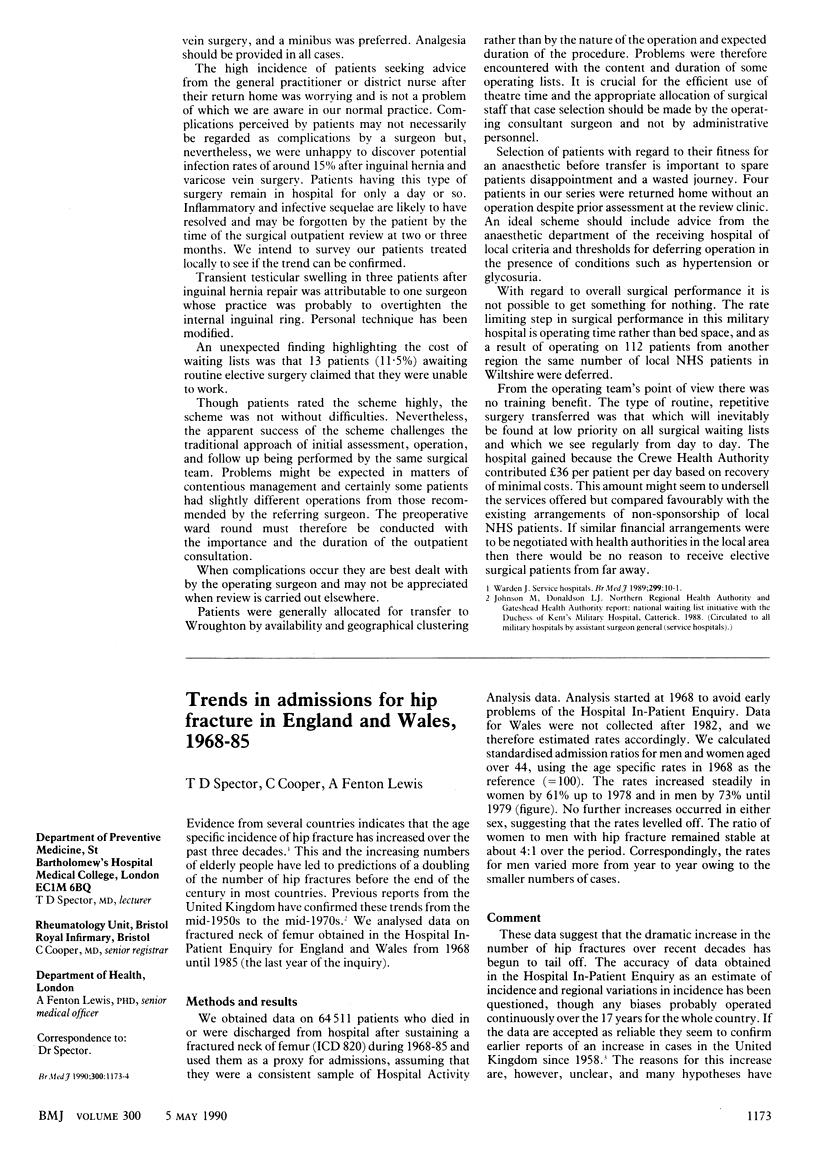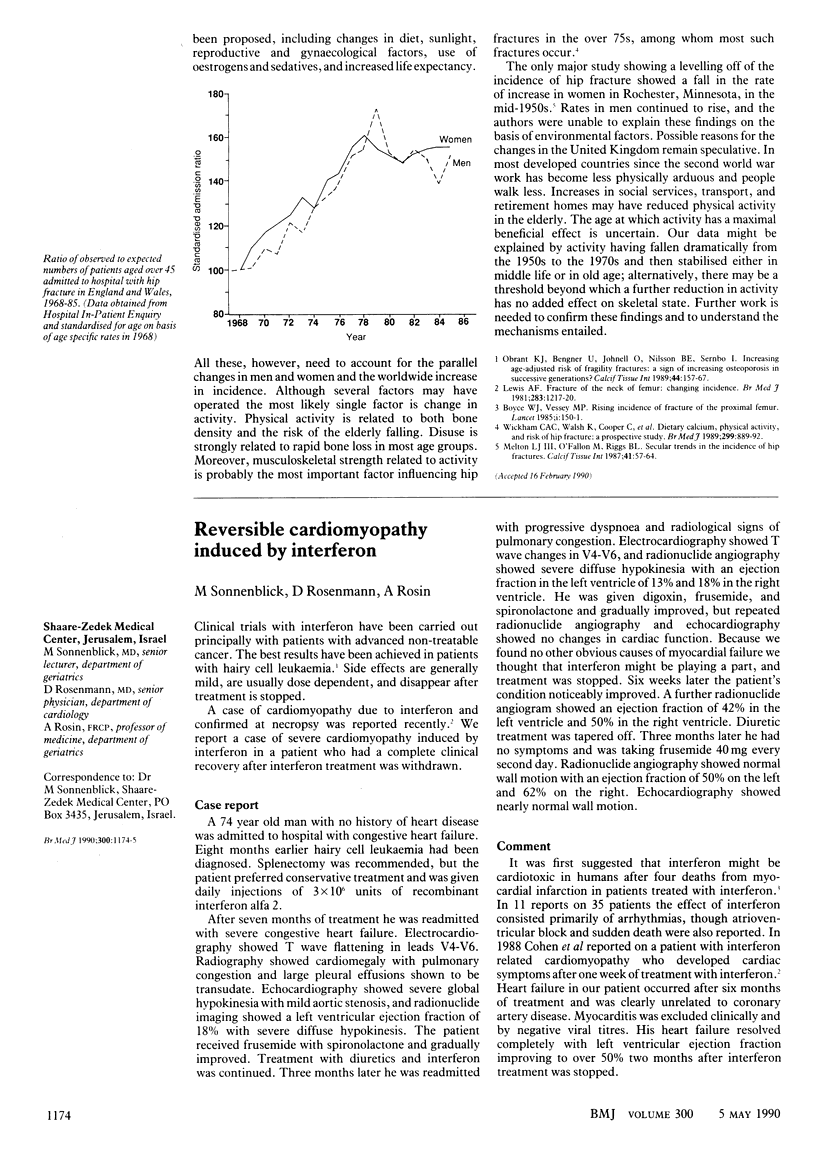Full text
PDF

Selected References
These references are in PubMed. This may not be the complete list of references from this article.
- Boyce W. J., Vessey M. P. Rising incidence of fracture of the proximal femur. Lancet. 1985 Jan 19;1(8421):150–151. doi: 10.1016/s0140-6736(85)91915-4. [DOI] [PubMed] [Google Scholar]
- Lewis A. F. Fracture of neck of the femur: changing incidence. Br Med J (Clin Res Ed) 1981 Nov 7;283(6301):1217–1220. doi: 10.1136/bmj.283.6301.1217. [DOI] [PMC free article] [PubMed] [Google Scholar]
- Melton L. J., 3rd, O'Fallon W. M., Riggs B. L. Secular trends in the incidence of hip fractures. Calcif Tissue Int. 1987 Aug;41(2):57–64. doi: 10.1007/BF02555245. [DOI] [PubMed] [Google Scholar]
- Obrant K. J., Bengnér U., Johnell O., Nilsson B. E., Sernbo I. Increasing age-adjusted risk of fragility fractures: a sign of increasing osteoporosis in successive generations? Calcif Tissue Int. 1989 Mar;44(3):157–167. doi: 10.1007/BF02556558. [DOI] [PubMed] [Google Scholar]
- Wickham C. A., Walsh K., Cooper C., Barker D. J., Margetts B. M., Morris J., Bruce S. A. Dietary calcium, physical activity, and risk of hip fracture: a prospective study. BMJ. 1989 Oct 7;299(6704):889–892. doi: 10.1136/bmj.299.6704.889. [DOI] [PMC free article] [PubMed] [Google Scholar]


